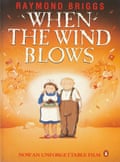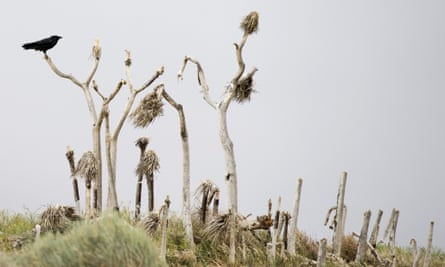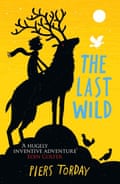When I was growing up, I loved reading books about the end of the world. A food destroying virus in John Christopher’s The Death of Grass or life after a nuclear event in John Wyndham’s Chrysalids. And you might want to read When the Wind Blows by Raymond Briggs with Trident renewal becoming such an important issue in this election.

Like much dystopian fiction, the books succeeded because although set in imagined futures, they were firmly about the now.
They took the emotional landscape of the time the rivers of anxiety, the valleys of fear – which mapped out so much of the collective social subconscious and made them real.
For John Cristopher’s original readership in original austerity Britain, there were anxieties about food shortages and social breakdown after the war. As a child devouring books in the Cold War fixated 1980s, When the Wind Blows was the first graphic novel I read – and haunts me still.
For today’s teen reader The Hunger Games amplifies anxieties about epic inequality and injustice in the land of the free, through a ruthlessly logical extension of an amoral reality TV culture.
However, John Christopher’s crop decimating virus, Raymond Briggs’ nuclear fallout and Suzanne Collins’ latter day gladiators all have one thing in common. They may be based on very current fears and rooted in factual possibility, but they are fantasy. The apocalypses are imagined, the consequences speculative, the new world orders thankfully without real world power.
I like alarming myself with these kind of books, so it’s not wholly surprising that I have written some of my own. The Last Wild trilogy is set in what looks like a fantasy world too. They have also been described as “science fiction,” “dystopian”, and now “cli‐fi”.
“Cli‐fi” is a term coined by blogger Dan Bloom to describe fiction dealing with the current and projected effects of climate change. Some of the cli-fi authors you might have read include David Thorpe, Moira Young and Sarah Holding. Cli-fi as a new genre has taken off in a big way and is now being studied by universities all over the world.
But don’t make the mistake of confusing it with sci- fi. If you think stories showing the effects of climate change are still only futuristic fantasies, think again.
For example, I would argue that the only truly fantastical element in my books is that the animals talk. To one boy. I accept that is not a wholly realistic proposition. (Although I swear my cat understands me.) Other cli‐fi elements of my story that are often described as fantastical or dystopian, include the death of all nearly all the animals in the world. That’s just me painting an extreme picture, right, to make a good story? Like kids killing kids live on TV, or life after a worldwide nuclear holocaust? I wish.
The recent 2014 WWF Living Planet Report revealed that the entire animal population of the planet had in fact halved over the last 40 years. 52% of our wildlife, gone, just like that. Whether through the effects of climate change to the growth in human population to the depredation of natural habitats, the children reading my books now might well find themselves experiencing middle‐age in a world without the biodiversity we once took for granted. A world of humans and just a few pigeons, rats and cockroaches scratching around…
So, how about the futuristic vision of a planet where previously inhabited areas become too hot and dry to sustain human life? That’s standard dystopian world building fare, surely?

Yes, except that right now, as you read this, super developed and technological California – the eight largest economy in the world, bigger than Russia ‐ is suffering a record breaking drought. The lowest rainfall since 1885 and enforced water restrictions of up to 25%. They can track every mouse click ever made from Palo Alto apparently, but they can’t figure out how to keep the taps running. That’s just California – never mind Africa or Australia.
Every effect of climate change in the books – from the rising sea levels of The Dark Wild to the acidic and jelly‐fish filled oceans in The Wild Beyond, is happening right now, albeit on a lesser level. The same cannot be said ofThe Hunger Games or Divergent.

Is this appropriate for children? Am I doom mongering? Today, the sun is shining in a bright blue sky. There are birds in the garden, and bees beginning to visit the flowers. Food, water and air are all readily available. I don’t want to give any younger readers sleepless nights about tomorrow or even the day after tomorrow. But the likelihood is that climate change will reach crisis point in your lifetimes.
So writing provocative stories about the state we’ve left the planet in that’s not science fiction or fantasy. It’s all too contemporary.
Piers Torday’s second book The Dark Wild won the Guardian Children’s Fiction Prize 2014. The Wild Beyond is out now.
